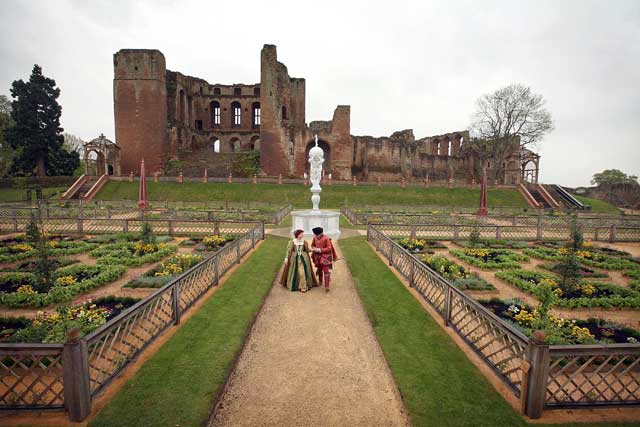Peace, on earth: Find tranquility in English Heritage's beautiful gardens

The National Trust may well own England's most famous gardens, but English Heritage's are the most peaceful, by a mile. The first English Heritage landscape I ever went to see was at Wrest Park, halfway between the M1 and the A1 in Bedfordshire. The landscape at Wrest Park is dotted with delicate buildings, beautiful old trees, long canals and vistas; a sort of smaller version of Stowe for those who don't want to walk until their legs drop off. But particularly appealing is the fact that on a day when Stowe would be heaving with people picnicking, Wrest feels almost as if you have the place to yourself.
English Heritage is a successor of the wartime Ministry of Works and the later Ministry of Public Buildings and Works, and in government hands many of its properties developed a faintly melancholy air. But I like that. And it has paid a lot of attention to its gardens over the past few years, spending money on restoration and new commissions, so it seems only right and proper that we started paying attention too. For example, a new book by the historic gardens expert Gillian Mawrey, The Gardens of English Heritage (Frances Lincoln, £25), highlights the landscapes in all their glory.
The advantage for the moment, though, is ours. There's a sort of mysterious, forgotten aura about these gardens which I want them to keep, however much restoration English Heritage gets up to. For example, another world-class spot that doesn't host world-class numbers of visitors is Audley End. This Tudor mansion in Essex has a fantastic old garden, with what are arguably the first herbaceous borders in English gardening – surely worth seeing just for that. And while you'd be elbowed out of the way admiring the long borders at Hidcote during August, Audley End is a distinctly quieter experience. Elsewhere, their veg garden is run so beautifully on organic principles that it will inspire even chemical enthusiasts.
English Heritage has taken interesting horticultural decisions elsewhere, too. Charles Darwin's home at Down House, Kent, now has restored greenhouses where you can see descendants of the plants he studied, and an exemplary Victorian kitchen garden with all varieties labelled. And at six of its properties, it has commissioned entirely new gardens, intended to be in keeping with the original feel of the site. Richmond Castle in Yorkshire's cockpit became a turfed performance area with topiary, in memory of First World War conscientious objectors; Portland Castle got a grasses garden by the sea, created by the Chelsea medal-winning minimalist, Christopher Bradley-Hole.
Finally, one of the most visible of English Heritage's regeneration projects has been the highly controversial Elizabethan garden created at Kenilworth Castle. The castle has been an interesting ruin since the Civil War, but it's still an excellent place to visit, with ramparts and dungeons aplenty. Health and safety ensures that the Tudor-style space can be reached by stairlift, and you can have a family vote to decide whether the horticultural spectacle is worth the cool £2.1 m it cost to make.
Battle of the gardens
Biddulph Grange, Staffs
A 19th-century NT jewel with Chinese bridges and Egyptian tombs; 20 minutes from the M6 and heaving with visitors.
vs
Brodsworth Hall, South Yorkshire
Near the A1 at Doncaster, EH's Brodsworth, below, was spectacular in the Victorian era, with its 15 acres of grand gardens, currently under restoration.
Sissinghurst Castle, Kent
Probably the world's most famous garden around ruins, as the coachloads bear witness.
vs
Kirby Hall, Northamptonshire
A mansion of the 1570s, burnt out completely. Its lonely, atmospheric ruins now overlook a patterned Tudor garden.
Stourhead, Wiltshire
One of the world's finest landscape gardens, with grottos and temples – but suffers from its proximity to the A303.
vs
Chiswick House, west London
A perfect 18th-century landscape garden with equally perfect grottos and temples, only marred by noise from the nearby A4.
Subscribe to Independent Premium to bookmark this article
Want to bookmark your favourite articles and stories to read or reference later? Start your Independent Premium subscription today.

Join our commenting forum
Join thought-provoking conversations, follow other Independent readers and see their replies